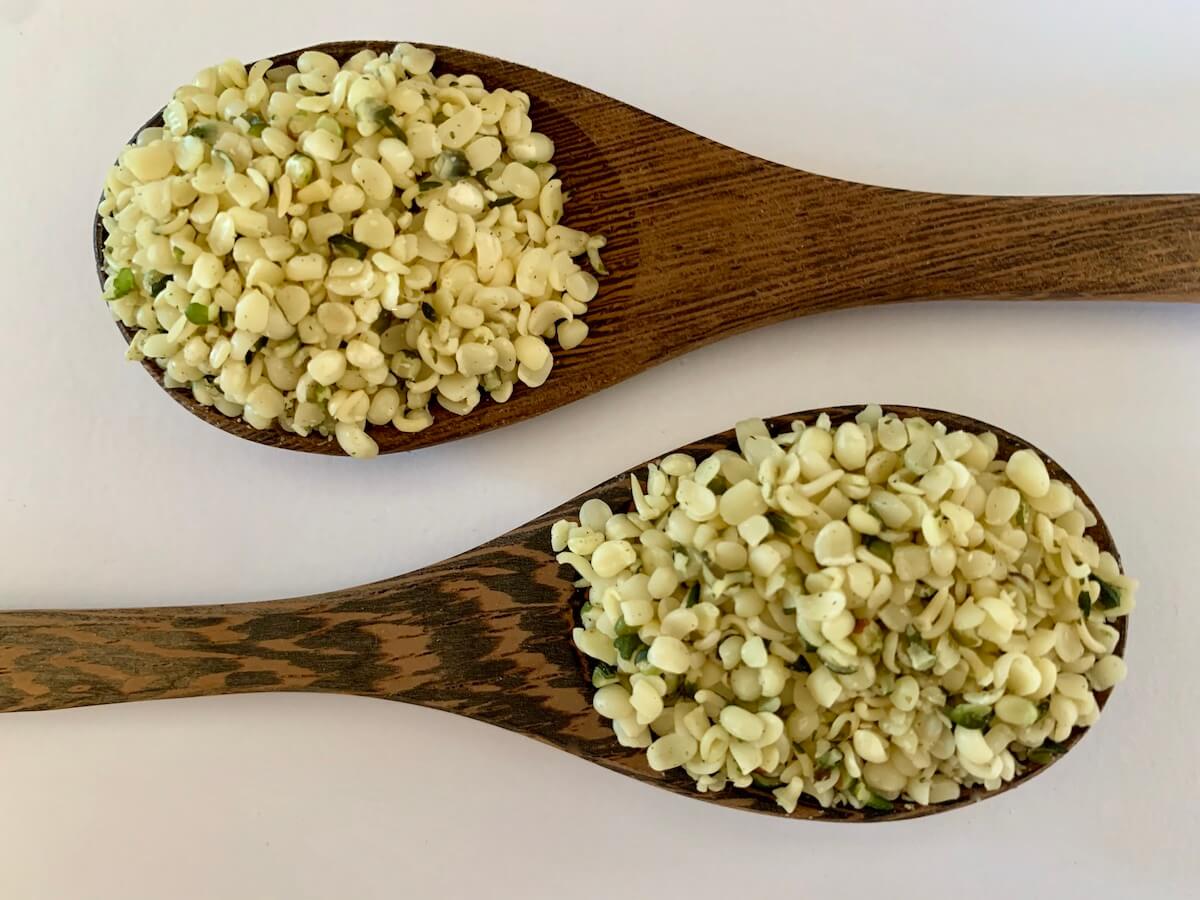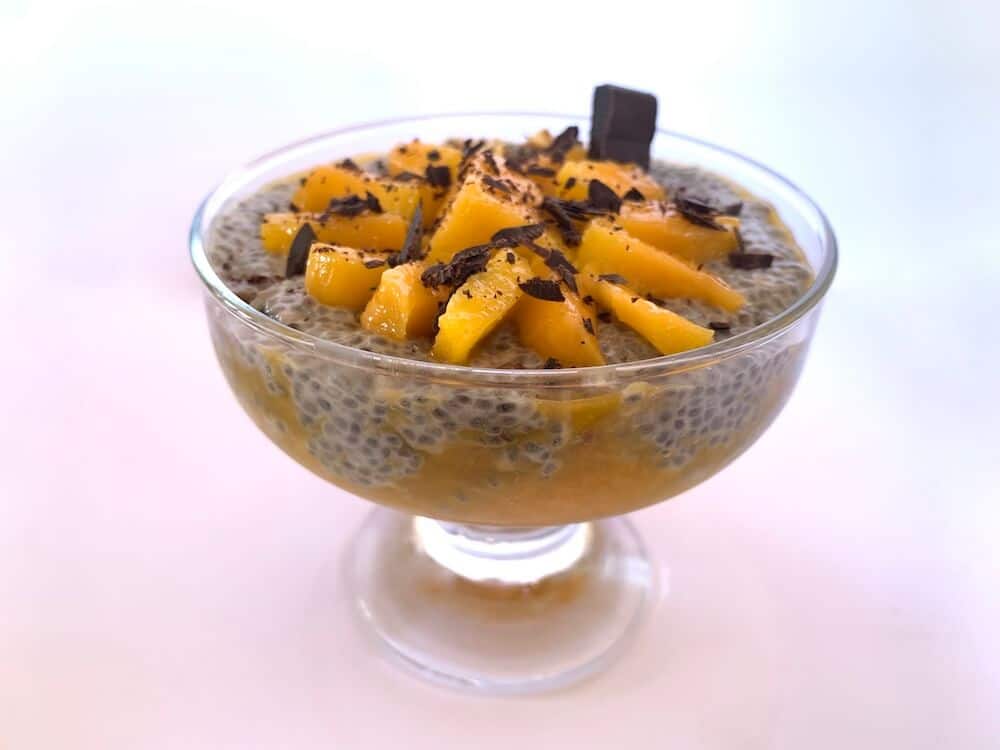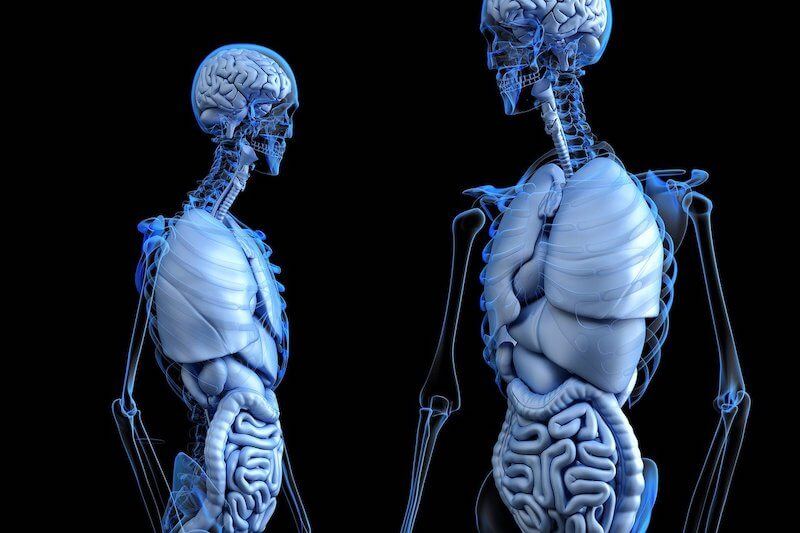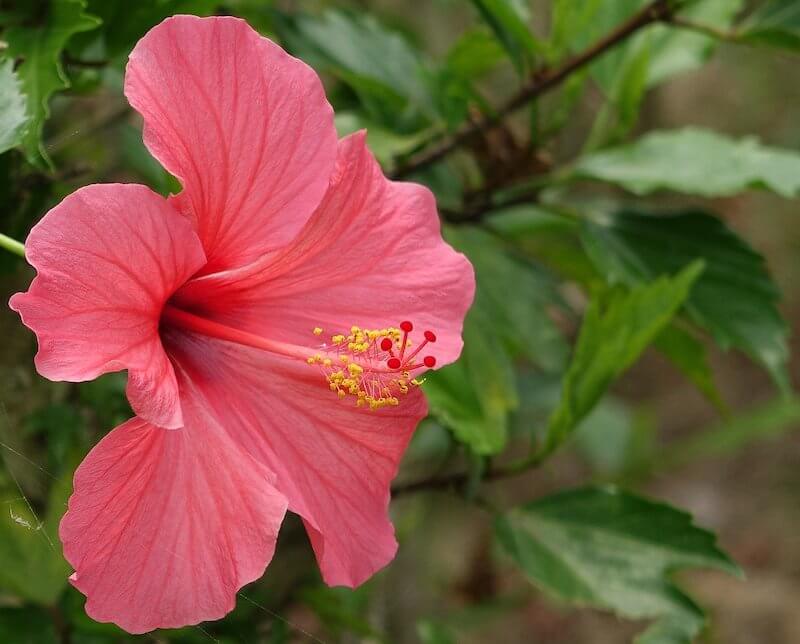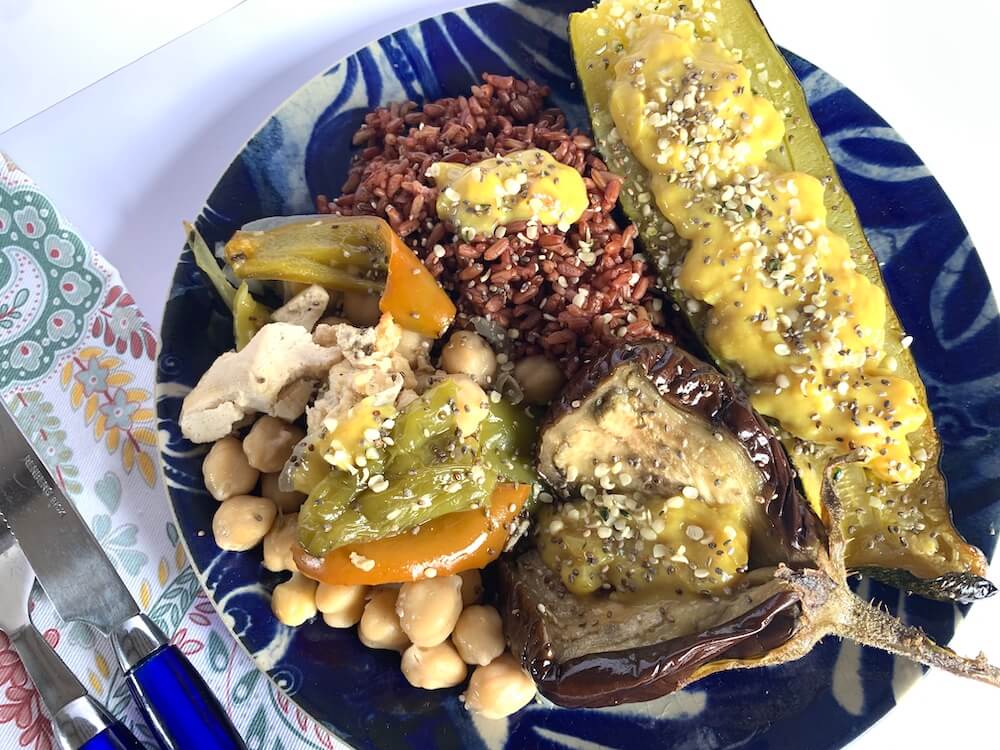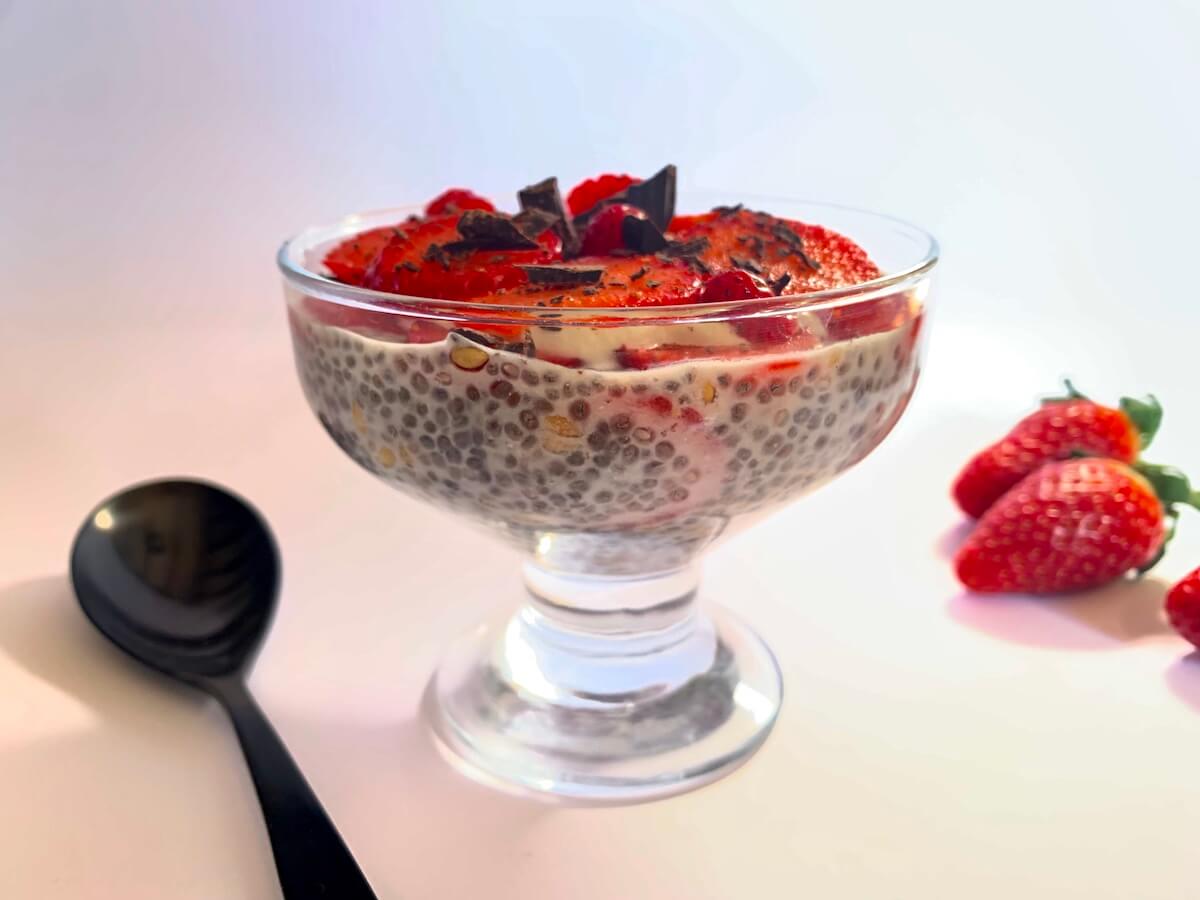When I first heard about the benefits of eating hemp seed, I hadn’t really come across them, and like for so many other people, the distinction between marijuana and hemp was a bit blurry for me.
But don’t worry, hemp seeds won’t give you a hit like the close relative marijuana would. Hemp is completely without psychoactive effects.
Now that I’ve started eating them I’m absolutely hooked! (Ok, not literally!)
The thing is, it took me years to really get round to trying hemp seeds, even though I knew about their existence. I used to eat chia and flax, but hemp? No.
They were just one of those things that I didn’t investigate. Until I did.
So I thought it would be cool to share these little nutrient gems with you and save you from spending lost years without them. In fact, I now make sure that I always have hemp seeds in my cupboard, as well as a range of other health-boosting seeds like flax, chia, sesame and pumpkin.
I love hemp so much, I put it on almost everything I eat. And I even eat it on its own as a snack.
And when I started looking into the topic, I found it so interesting that I thought I’d share some of what I’ve learnt here with you. So here’s a little juicy background information for you . . .
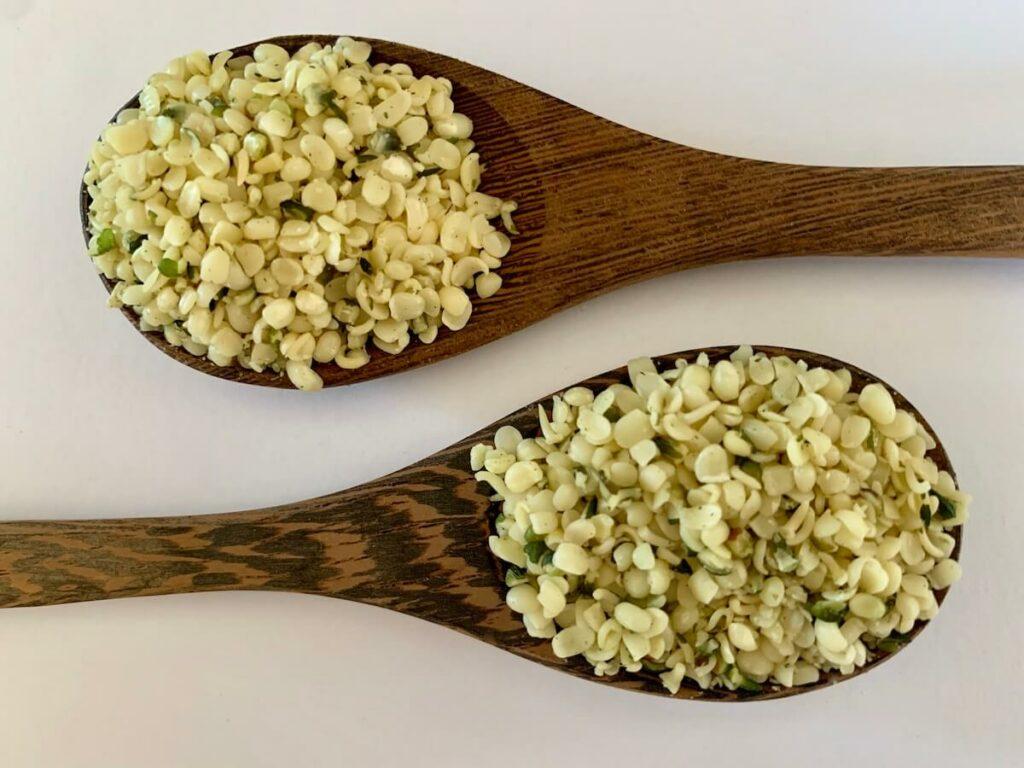
Table of Contents
What are Hemp Seeds?
Hemp seeds are the seeds of the Cannabis sativa L plant, the same family as the marijuana plant, only a different strain of the family. Although they look similar, the marijuana plant is grown for its flowers which are large and bountiful.
The hemp plant on the other hand, is predominantly grown for its stalk, and it grows tall and scrawny with a much thinner flower, reaching heights of up to 15 metres.
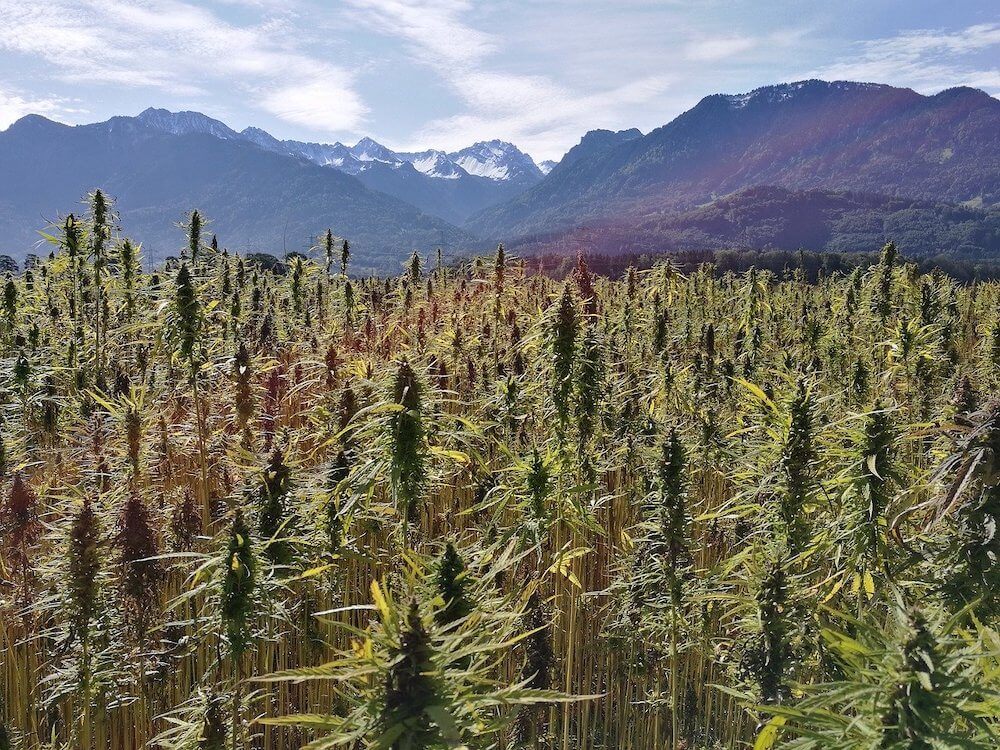
Many years ago, there was no terminology to distinguish between the marijuana and the hemp strain, despite physical differences in the plants and the fact that marijuana contains THC (tetrahydrocannabinol), which is what gets you high, while hemp only has small or negligible amounts (legal classification requires levels of under 0.2 or 0.3 or 1% depending on the country).
The term hemp seed tends to be used interchangeably for the whole seed or the shelled seed, although the most common way to eat hemp seeds is the shelled variety, and the correct name for the shelled hemp seeds is hemp hearts.
Interesting Facts About Hemp
Hemp’s an incredible plant. From biodegradable plastic, to bio fuel, to fabrics, ropes, cosmetics and a healthy super food, hemp could be the crop of the (environmentally friendly) future.
It’s been grown for millenniums and only suffered a setback due to its recent (last century) association with marijuana when laws were set up to restrict its production (see more below).
Where did Hemp Originate?
Hemp’s been grown since around 10,000 BC and is thought to have originated in Central Asia. It was cultivated in China as early as the 28th century BC.
It (relatively) quickly spread through the rest of the world, finally arriving in Europe around 1,200 BC. Hemp was a valuable economic crop, which was first used for making paper and textiles.
It was mainly grown for its fibrous stem, which is used in the making of textiles, clothing, shoes, & bags as well as being essential in the early days of the shipping industry, for making of canvass and shipping ropes.
A Brief History of Hemp Production
Hemp’s always been an extremely important crop – until last century that is. As mentioned above, it was hemp that was first used for spinning yarn and making textile as well as the earliest form of paper. It then went on to become indispensable in the shipping industry.
As well as that, artist’s canvasses were made from hemp, as were the first pair of Levi jeans!
According to the People’s history, hemp’s considered to have been the first form of industry in the history of mankind. It was also commonly given as a medicinal treatment for ailments such as arthritis, rheumatism, dysentery, insomnia, convulsions and complicated childbirths.

Today it’s still used in many products, with demand growing due to its versatility, durability and sustainability, as well as being vital in the creation of ‘hemp plastic’ a biodegradable form of plastic to replace standard plastic.
According to the Hash Marihuana & Hemp museum in Amsterdam, hemp plastic is the plastic of the future and is already being used by BMW, Mercedes and Bugatti for their door panels. Further investigation shows that other car makes are also incorporating hemp into their body part, including, but not exclusively, Audi, Honda, Porsche and VW.
The kind of plastic made from hemp is called a bio plastic. It’s a strong, lightweight alternative to non-biodegradable oil-based plastics.
Hemp plastic isn’t new on the scene, however. In the early 1930s hemp was set to be a billion dollar industry in the USA until the marihuana tax act was passed in 1937, in which marijuana and hemp were classified together under the same act, and which killed off any legitimate business opportunities with hemp.
Despite the marihuana tax act, during the war, from 1942 to 1945, the government encouraged production of hemp for its fibre and the slogan ‘Hemp for Victory’ became widely known.
Henry Ford was a great advocate of hemp and In 1941 he produced a prototype car with the body made from hemp plastic to prove how strong hemp really was.
Unfortunately, after the war, hemp became more obsolete because of being classed as the same as marijuana and associated with cannabis, despite the fact that hemp has no mind-altering affects as it is low in THC (which is responsible for the effects of marijuana).
Since then, people’s opinion has been so scarred by the incorrect association between hemp and psychoactive drugs, that the true, valuable extent of the benefits of this sustainable, valuable crop were thwarted.
In 1970, President Nixon included hemp in the Act Against Controlled Substances and although today it’s legal to grow hemp, it’s strictly controlled and must contain less than 0.3 % THC, which can create complications for the grower.
In some states in the USA, if tests show that the THC concentration is above the 0.3% the crop must be destroyed as it will be classified as cannabis, so the farmer could lose all his profits from a crop that measured in just slightly high, albeit still too low to have psychoactive effects.
In Europe, the legal amount of THC is even less, at 0.2%. In Switzerland however, the figure is 1%, making for much easier production, as the levels of THC can vary from crop to crop and depending on the specifics of the plant and its environment with no negative consequence to the grower.
In order for international trade to succeed and for producers to be able to fully produce this sustainable and eco-friendly crop, hemp, many parties hope for an international agreement of 1% maximum THC.
Hemp seed has been eaten in China since 8000 years ago.
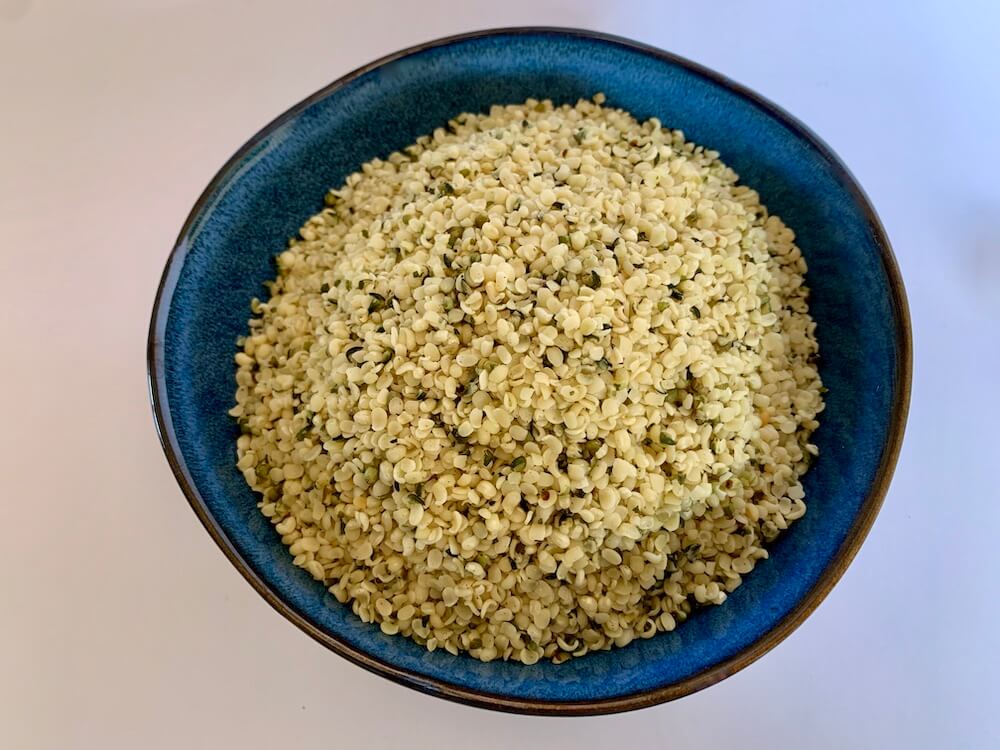
Given that levels of THC in marijuana reportedly vary from up to 20%, even up as high as 30% in specially bred plants, the 0.2% is extremely cautious and you might well also think that the 1% sounds reasonable as it is still too low to cause phycological effects and would facilitate wider production of this environmentally-friendly crop.
Hemp’s grown in many countries, with France being the highest producer of hemp in Europe, producing about a quarter of the worldwide hemp, and second only to China, with the USA coming in at third place.
However, with growing awareness of the climate crisis and demand for more ethical products and environmentally friendly industries, the hemp industry is set to explode over the coming years.
Let’s hope that we wake up to supporting and producing more environmentally-friendly crops which could subsequently replace many of today’s damaging industries.
9 Diverse Uses of Hemp Plant
Hemp is a source of fibre, oil and protein, and its potential uses are widespread. It’s a fast-growing plant which can be used in its entirety, with no waste whatsoever. It can even be planted as crop to ‘clean’ up soil that is contaminated with heavy metals, sewage etc.
- Seeds, oil, etc for human consumption
- Animal feed
- Medicinal CBD oil, pain relief creams, eczema treatments etc.
- Textiles, clothing, linen, footwear, bags etc.
- Bio plastics
- Baler twine, rope, cords etc.
- Biofuel
- Cosmetics
- Insulation blocks, bricks, panels etc. in the construction industry as well as machine parts
Is Hemp Gluten Free?
Hemp seeds of themselves are 100% gluten free but as they may be grown in rotation with cereals which contain gluten, such as wheat for example, they could, potentially become cross-contaminated.
In order to be absolutely sure that there was no cross contamination, you can buy hemp seed that is certified gluten free.
How Much Hemp Seed Per Day?
About 2 tablespoons of hemp per day would be a good supplement to your food. Remember that hemp seed is very high in oil so you don’t want to take too much in one day.
The high oil content could cause mild diarrhoea if you eat too much.
Nutritional Value of Hemp Seed
Protein in Hemp Seed
Hemp’s a great source of plant protein, containing all 9 essential amino acids in the right proportions for the human body, making it a great addition to a vegan or vegetarian diet (although it’s actually super healthy for anybody eating any type of diet!).
As the body cannot create these 9 essential amino acids, they need to be sourced from food, and what better way than by adding these delicious little gems to your meal!
Healthy Fatty Acids in Hemp Seed
Hemp’s high in healthy unsaturated fats and fatty acids, containing both linoleic acid or omega 6, and alpha-linolenic acid or omega 3 (ALA).
In today’s world it’s quite common for people to eat a diet too high in omega 6 and deficient in omega 3. Eating hemp can readdress the omega levels and create the perfect balance with that all-important omega 3 boost.
Fibre in Hemp Seed
Hemp’s high in fibre, and fibre in turn helps to promote gut health and stabilise blood sugar levels as well as create the feeling of fullness and thus control appetite levels and benefit in a weight-loss management program.
Vitamins & Minerals in Hemp Seed
Hemp seeds are rich in vitamin E with its antioxidant activity, calcium, magnesium, phosphorus, potassium, iron and zinc as well as the B vitamins riboflavin, thiamine, vitamin B6 & folate.
So what does all this mean for your health?
What are the Health Benefits of Hemp Seeds?
Hemp has been shown to support brain health, a healthy heart, the skin, the immune system and the digestive tract. It contains anti-inflammatory and antioxidant properties as well as digestible complete protein.
If you don’t already include hemp seeds in your diet, I really recommend them. At the very least you’ll know that you’re giving your protein intake a boost with every tablespoon of hemp seeds that you pile on your plate.
And that’s not to mention the anti-inflammatory and antioxidant effects to boost your health and help combat the effects of ageing.
Hemp to Maintain a Healthy Heart and Reduce the Risk of Heart Disease
Unsaturated fats (omega 3 fatty acids) have been shown in tests to promote heart health, and hemp seeds are rich in omega 3 (ALA), thus supporting heart health and reducing the risk of heart disease.
These healthy fats can help to lower triglycerides in the blood, reduce the risk of blockage in the arteries, reduce the risk of abnormal heart rhythm and increase the healthy cholesterol (HDL) present in the blood while decreasing bad cholesterol.
Omega 3 can also reduce the risk of atherosclerosis, a condition where the arteries become thinner as a result of a build up of plaque.
In conclusion, studies have shown that omega 3 is an important factor in maintaining a healthy cardiovascular system and reducing the risk of heart disease.
You can read more about hemp for the cardiovascular system over on the heart-health site, called Circulation.
Hemp for Reducing Menopausal Symptoms
Studies have shown that omega 3 can be a significant aid in managing the depression which can accompany the transition to menopause, as well as the hot flashes which so many women experience during the menopausal period.
Hemp Seeds for Digestion
Hemp seeds are high in fibre, which can help heal and promote a healthy gut. However, the fibre in hemp is found in the outer shell, so this doesn’t apply if you’re eating the hemp hearts, as they’ve had the outer shell removed.
Hemp Seeds for the Skin
The fatty acids in hemp seeds help to boost the immune system, and thus may help to reduce fine lines and signs of ageing in the skin. Fatty acids are essential in the formation of new cells.
As well as eating the hemp seeds for optimum skin health, hemp oil is also used as a topical moisturiser for the skin.
Hemp to Ease Arthritis and Other Inflammatory Diseases
Hemp seeds contain gamma linolenic acid (GLA), which is a strong anti-inflammatory, useful in alleviating the symptoms and pain associated with inflammatory conditions such as arthritis.
If you would like to read more about the scientific research into hemp and its numerous health benefits, you might like to read this research paper on hemp.
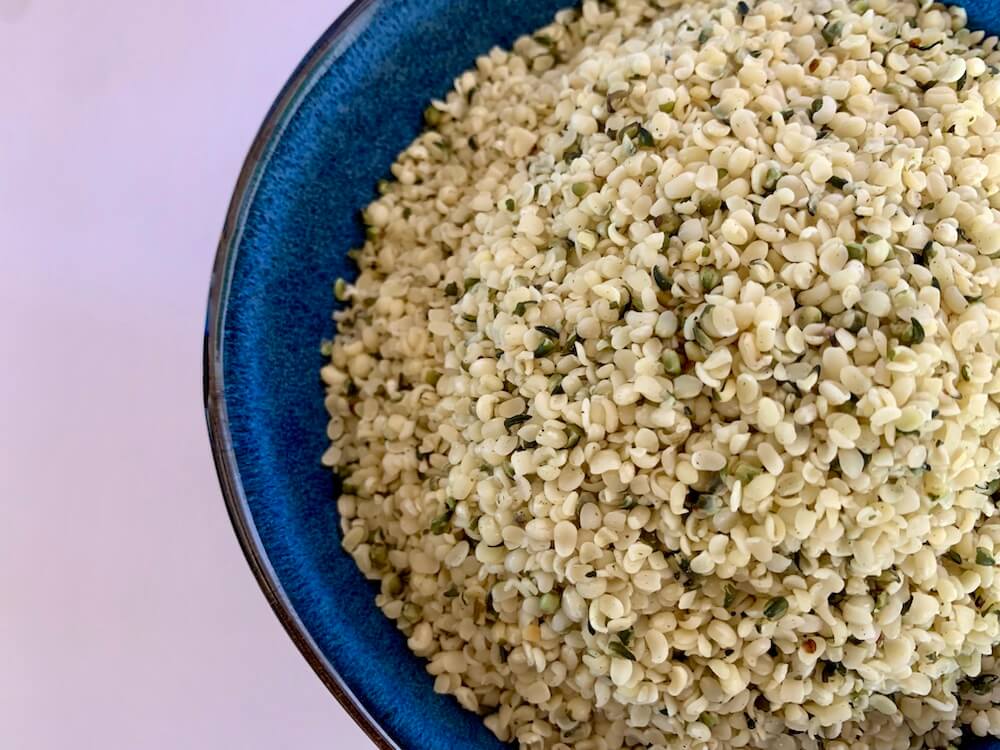
How to Eat Hemp Seeds
These are the various ways that you can include hemp seeds into your lifestyle. For me, it’s the hemp hearts all the way! I love them.
Hemp Seed Milk
At the time of writing, hemp milk isn’t common place in the shops, but it does exist. Currently, in Spain, from Amazon, the price of hemp milk is rather high, making it a non-sustainable option for most of us.
But price aside, hemp milk has incredible health properties, making it an extremely attractive alternative to other plant milks or dairy milk.
Hemp milk is higher in calcium than dairy milk, higher in protein, and contains the fatty acids omega 6 & omega 3 in the ideal ratio of 1:3, being healthy for you brain and your heart. It has anti inflammatory properties and the antioxidants are immune boosting.
You can make your own hemp milk by blending hemp seeds with water, but it isn’t something I’ve done as I’m happy eating the seeds.
Hemp Seed Oil
Not to be confused with CBD oil, hemp seed oil is from the hemp seeds and can be used for salad dressings or for drizzling over your pasta or veggies. It’s best eaten raw, not heated for cooking, which could destroy its nutritional benefits.
CBD Oil
CBD oil is a huge topic and not really relevant to this post on the benefits of eating hemp seed in your vegan diet, but I just mention it in passing as it is also made from the hemp plant.
CBD oil is a powerful medicinal oil which can bring pain relief, an increased feeling of wellbeing and better sleep, among many other reported benefits that people have reported when taking this powerful oil.
Hemp Seed Protein Powder
You can buy hemp protein powder to add into your smoothies or shakes. This might be your best bet if you’re looking for straight protein boost.
Hemp Seed Hearts
The actual hemp seed as its taken from the plant is covered in a hard shell, so what you’re buying when you buy hemp seeds is actually the hulled inner part of the hemp seed, also known as hemp hearts because of their heart shape.
The hearts are by far my favourite way to eat hemp. Not only are they easy to add to almost any dish, they actually add a delicious but subtle flavour to your food. And by adding the whole seeds you know you’re getting the best of everything. All the protein and fatty acids, vitamins and minerals. Plus they’re more natural and less processed than any of the other options (except the whole seed of course).
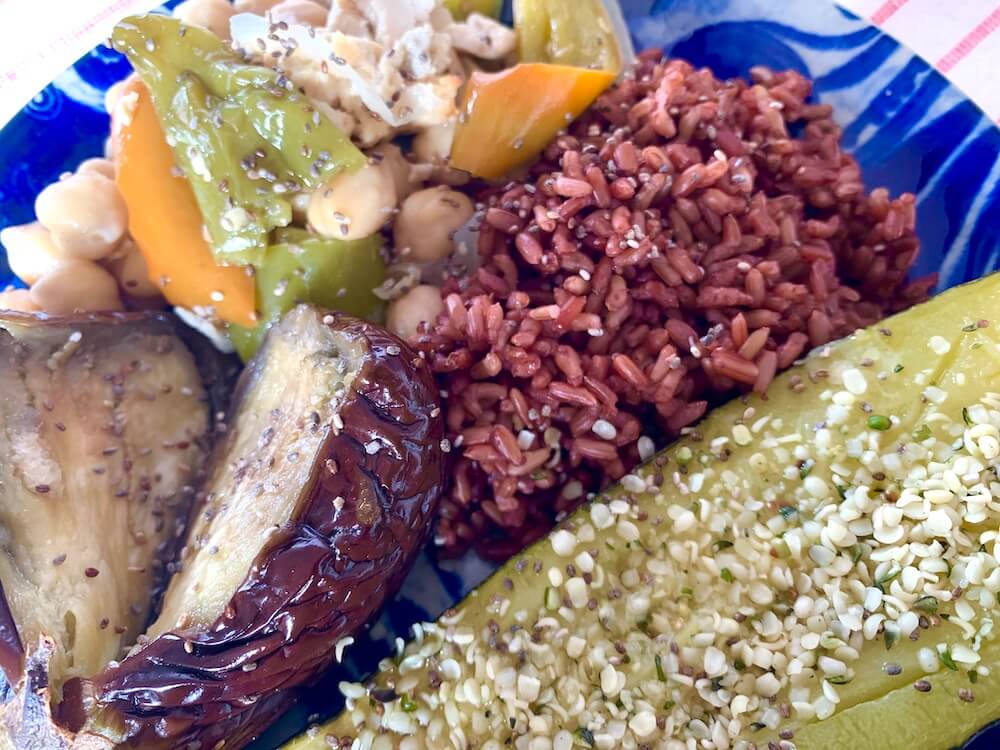
I like to add them to my salad, sprinkle them onto pasta, load them over a buddha bowl, pour them into my soup, scatter them over my fruit or spoon them onto my rice or noodles.
I just love them.
How to Store Hemp Seeds
Hemp seeds can go rancid and as well as that, the omegas can be destroyed by light, so it’s best to keep them in an airtight container in the fridge or freezer.
If you’ve left them out on your kitchen counter in a jam jar, you may find their nutritional value depleted, or you might arrive to find them tasting off one morning.
Storing them in the dark in the fridge will ensure that they last for months.
Conclusion on Including Hemp Seeds in Your Gluten Free Vegan Diet
I hope this has given you food for thought and inspired you to go out and add some hemp seeds to your kitchen stock.
I’ve never looked back and can honestly say that I don’t want to be without them again!
Any questions? Leave them below!
The information provided in this article is what I’ve learned by reading about hemp. It’s not offered in a medical way whatsoever and any medical queries should be discussed with your doctor or health practitioner. If you’re taking any form of medication, consult your specialist before adding hemp to your diet.
